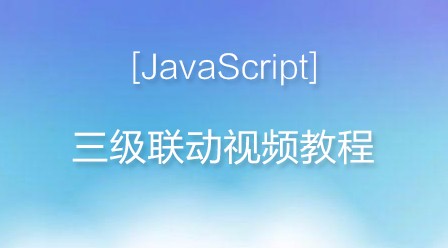今天给大家介绍一下如何SpringBoot中连接Mysql数据库,并使用JPA进行数据库的相关操作。
步骤一:在pom.xml文件中添加MYSQl和JPA的相关Jar包依赖,具体添加位置在dependencies中,具体添加的内容如下所示。
<!--数据库相关配置-->
<dependency>
<groupId>org.springframework.boot</groupId>
<artifactId>spring-boot-starter-web</artifactId>
</dependency>
<dependency>
<groupId>org.springframework.boot</groupId>
<artifactId>spring-boot-starter-data-jpa</artifactId>
</dependency>
<dependency>
<groupId>mysql</groupId>
<artifactId>mysql-connector-java</artifactId>
</dependency>
<dependency>
<groupId>org.apache.poi</groupId>
<artifactId>poi</artifactId>
<version>3.11</version>
</dependency>步骤二:在application.properties配置文件中加入数据库的相关配置,配置信息如下所示。
spring.datasource.url = jdbc:mysql://localhost:3306/webtest spring.datasource.username = root spring.datasource.password = 220316 spring.datasource.driverClassName = com.mysql.jdbc.Driver # Specify the DBMS spring.jpa.database = MYSQL # Show or not log for each sql query spring.jpa.show-sql = true # Hibernate ddl auto (create, create-drop, update) spring.jpa.hibernate.ddl-auto = update # Naming strategy spring.jpa.hibernate.naming-strategy = org.hibernate.cfg.ImprovedNamingStrategy # stripped before adding them to the entity manager) spring.jpa.properties.hibernate.dialect = org.hibernate.dialect.MySQL5Dialect
这里给大家解释一下:webtest代表数据库名称、root是用户名、220316是密码
步骤三:编写数据库操作的实体类,实体类具体信息如下所示:
package example.entity;
import javax.persistence.*;
import javax.validation.constraints.NotNull;
import java.math.BigDecimal;
import java.util.Date;
@Entity
@Table(name = "user")
public class User {
@Id
@GeneratedValue(strategy = GenerationType.AUTO)
private int id;
@Column(name = "name", nullable = true, length = 30)
private String name;
@Column(name = "height", nullable = true, length = 10)
private int height;
@Column(name = "sex", nullable = true, length = 2)
private char sex;
@Temporal(TemporalType.DATE)
private Date birthday;
@Temporal(TemporalType.TIMESTAMP)
private Date sendtime; // 日期类型,格式:yyyy-MM-dd HH:mm:ss
@Column(name = "price", nullable = true, length = 10)
private BigDecimal price;
@Column(name = "floatprice", nullable = true, length = 10)
private float floatprice;
@Column(name = "doubleprice", nullable = true, length = 10)
private double doubleprice;
public Date getSendtime() {
return sendtime;
}
public void setSendtime(Date sendtime) {
this.sendtime = sendtime;
}
public BigDecimal getPrice() {
return price;
}
public void setPrice(BigDecimal price) {
this.price = price;
}
public float getFloatprice() {
return floatprice;
}
public void setFloatprice(float floatprice) {
this.floatprice = floatprice;
}
public double getDoubleprice() {
return doubleprice;
}
public void setDoubleprice(double doubleprice) {
this.doubleprice = doubleprice;
}
public User() { }
public char getSex() {
return sex;
}
public void setSex(char sex) {
this.sex = sex;
}
public Date getBirthday() {
return birthday;
}
public void setBirthday(Date birthday) {
this.birthday = birthday;
}
public User(int id) {
this.id = id;
}
public int getId() {
return id;
}
public void setId(int id) {
this.id = id;
}
public String getName() {
return name;
}
public void setName(String name) {
this.name = name;
}
public int getHeight() {
return height;
}
public void setHeight(int height) {
this.height = height;
}
}大家这里需要注意的是:实体类中的类名和字段属性都要和数据库中表和字段相互对应。下面给出一张MYSQL-JAVA各种属性的对应关系图:

步骤四:编写dao层的数据操作类,dao数据操作类如下所示:
package example.dao;
import example.entity.User;
import org.springframework.data.repository.CrudRepository;
import javax.transaction.Transactional;
import java.math.BigDecimal;
import java.util.Date;
import java.util.List;
@Transactional
public interface UserDao extends CrudRepository<User, Integer> {
public List<User> findByName(String name);
public List<User> findBySex(char sex);
public List<User> findByBirthday(Date birthday);
public List<User> findBySendtime(Date sendtime);
public List<User> findByPrice(BigDecimal price);
public List<User> findByFloatprice(float floatprice);
public List<User> findByDoubleprice(double doubleprice);
}大家这里可能会有疑问,为什么要继承CrudRepository<User, Integer>,具体有什么作用呢?
我这里给大家简单的介绍一下JPA中一些常用的用法和使用准则:
1.首先就是要继承CrudRepository这个方法,里面包含的两个参数的具体含义是:第一个参数表示所操作的实体类名称,第二个参数表示实体类中主键的类型。
2.继承完之后就可以使用一些继承自父类的方法了,比如上面所示可以使用findBy+“你要查询的字段名称”,通过这样的方法就可以轻轻松松实现SQL查询的功能了。
说道这里可能大家还是有点迷糊,给大家举一个例子就知道了:
例如上面的findByName(String name)其实等价于SQL语句中的 select *from user where name=?。这样一对比大家是不是马上就清楚这个方法到底代表什么含义了吧。
步骤五:编写controller这个控制类,控制类具体信息如下所示:
package example.controller;
import example.dao.UserDao;
import example.entity.User;
import org.springframework.beans.factory.annotation.Autowired;
import org.springframework.stereotype.Controller;
import org.springframework.web.bind.annotation.RequestMapping;
import org.springframework.web.bind.annotation.ResponseBody;
import java.math.BigDecimal;
import java.text.ParseException;
import java.text.SimpleDateFormat;
import java.util.Date;
import java.util.List;
@Controller
public class UserController {
@Autowired
private UserDao userDao;
@RequestMapping("/getName")
@ResponseBody
public String getByName(String name) {
List<User> userList = userDao.findByName(name);
if (userList != null && userList.size()!=0) {
return "The user length is: " + userList.size();
}
return "user " + name + " is not exist.";
}
@RequestMapping("/getSex")
@ResponseBody
public String getBySex(char sex) {
List<User> userList = userDao.findBySex(sex);
if (userList != null && userList.size()!=0) {
return "The user length is: " + userList.size();
}
return "user " + sex + " is not exist.";
}
@RequestMapping("/getBirthday")
@ResponseBody
public String findByBirthday(String birthday) {
System.out.println("birthday:"+birthday);
SimpleDateFormat formate=new SimpleDateFormat("yyyy-MM-dd");
List<User> userList = null;
try {
userList = userDao.findByBirthday(formate.parse(birthday));
} catch (ParseException e) {
e.printStackTrace();
}
if (userList != null && userList.size()!=0) {
return "The user length is: " + userList.size();
}
return "user " + birthday + " is not exist.";
}
@RequestMapping("/getSendtime")
@ResponseBody
public String findBySendtime(String sendtime) {
System.out.println("sendtime:"+sendtime);
SimpleDateFormat formate=new SimpleDateFormat("yyyy-MM-dd HH:mm:ss");
List<User> userList = null;
try {
userList = userDao.findBySendtime(formate.parse(sendtime));
} catch (ParseException e) {
e.printStackTrace();
}
if (userList != null && userList.size()!=0) {
return "The user length is: " + userList.size();
}
return "user " + sendtime + " is not exist.";
}
@RequestMapping("/getPrice")
@ResponseBody
public String findByPrice(BigDecimal price) {
List<User> userList = null;
userList = userDao.findByPrice(price);
if (userList != null && userList.size()!=0) {
return "The user length is: " + userList.size();
}
return "user " + price + " is not exist.";
}
@RequestMapping("/getFloatprice")
@ResponseBody
public String findFloatprice(float floatprice) {
List<User> userList = null;
userList = userDao.findByFloatprice(floatprice);
if (userList != null && userList.size()!=0) {
return "The user length is: " + userList.size();
}
return "user " + floatprice + " is not exist.";
}
@RequestMapping("/getDoubleprice")
@ResponseBody
public String findByPrice(double doubleprice) {
List<User> userList = null;
userList = userDao.findByDoubleprice(doubleprice);
if (userList != null && userList.size()!=0) {
return "The user length is: " + userList.size();
}
return "user " + doubleprice + " is not exist.";
}
}大家这里可能会有一个很大的疑问,我当初也对这个问题深深的不理,那就是userDao没有实例化为什么能够直接使用呢?
现在我就为大家解释一下为什么会这样:
其实不是这个userDao没有实例化,只是实例化是由系统自动完成的。只要在userDao的上方添加@Autowired属性就可以实现接口自动的实例化了,完全不需要像以前一样需要去写什么userDaoImp之类的实现类了。这样做就可以大大的挺高代码的简易程度,开发速度大大的挺高。
我知道现在可能还会有人问这样一个问题:那就是自动实例化了,可是实例化怎么知道dao类要实现什么的增删改查的功能呀,dao代码里面压根就没说啊?其实有心人可能已经发现了,上一步的时候我们解释了一下findBy+“字段名”的具体作用是什么,这其实就是这个问题的答案。其实dao层中各种方法就是daoimp中各种实现类中的SQl命令,具体是怎么对应的我会再下一节中给大家详细的介绍一下,现在先卖个关子。
步骤六:数据库的表名和字段信息如下所示:

【相关推荐】
1. Java免费视频教程
2. 极客学院Java视频教程
3. 阿里巴巴Java开发手册
以上就是java通过JPA进行数据库操作的实例详解的详细内容,更多请关注php中文网其它相关文章!



















